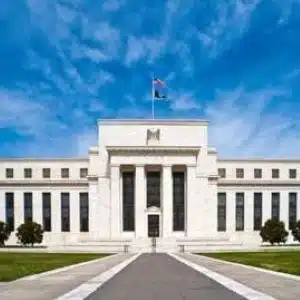The Federal Reserve Board of Governors will consider revisions to its cap on debit card swipe fees at its meeting next Wednesday. The announcement was made as part of a public notice about the upcoming board meeting. While no further details were provided about the Fed’s intentions, retailers made it clear Wednesday they are urging the Fed to lower the cap on swipe fees.
The Federal Reserve implemented the cap 12 years ago as part of the Durbin Amendment to the Dodd Frank Act. The cap applies only to cards issued by banks with at least $10 billion in assets and limits debit card interchange to a maximum of 21-cents plus 1 cent for fraud prevention and 0.05% of the transaction amount to cover fraud costs, per transaction.
Merchants argue the actual cost of a debit card transaction has fallen by more than 50% since the cap was implemented. The limit should be lowered proportionally, merchant groups say. “Debit card swipe fees are way out of proportion and need to be adjusted downward, as all the data shows the cost of a debit transaction is tiny compared to the swipe fee. That needs to change,” says Doug Kantor, an executive committee member at the Merchants Payments Coalition and an executive committee member and general counsel for the National Association of Convenience Stores.

In implementing the 2010 Durbin Amendment, Congress directed the Fed to adopt regulations requiring that debit card swipe fees be reasonable and proportional to banks’ costs. The Fed initially proposed a cap of up to 12 cents and eventually settled on a maximum of 21 cents per transaction.
The Fed is required to review the cap every two years, but has not adjusted it since the original limit was put in place, even though the cost of a debit card transaction for banks has fallen to 3.9 cents from 8 cents as of 2019, the most recent year for which the Fed has released that data.
“Congress told banks a dozen years ago that debit card swipe fees should be ‘reasonable and proportional’ but they’ve never been either,” Stephanie Martz, chief administrative officer and general counsel for the National Retail Federation said in a statement. “It’s time to set the cap that Congress intended and recognize that banks’ costs to process transactions have dropped significantly. These fees have been too high for too long and we’re glad to see the Fed is finally ready to act.”
FMI, the Food Industry Association, also issued a public statement supporting the Federal Reserve’s decision to reconsider that debit fee cap.
Since the debit fee cap was instituted, merchants have saved an estimated $9.4 billion a year, according to consulting firm CMSPI. Merchants have passed on about 70% of those cost savings to consumers, the firm says. But merchant groups argue merchants could have seen even greater savings if the cap had been set lower or periodically adjusted to reflect debit issuers’ declining costs per transaction.
Should the Fed revise the fee cap downward, the largest debit card issuers would feel the biggest financial hit as they generate $16.6 billion from debit interchange, while merchant acquirers would could enjoy near-term benefits, Robert Napoli, an equity research analyst for William Blair, writes in a Wednesday research note.
“While it would likely take time for any change to be enacted, if debit interchange is reduced, the largest issuers are most at risk…,” Napoli writes. “We believe the impact on the debit networks in our coverage—Visa, Mastercard, Pulse (Discover), Star/Accel (Fiserv), and NYCE (FIS)—would likely be insignificant. Further, we believe if interchange is reduced, merchant acquirers such as Global Payments, Fiserv, and FIS could be near-term beneficiaries as their debit card costs are reduced, but this benefit would likely be competed away over time.”
The Electronic Payments Coalition, which represents credit unions, community banks, payment card networks and other financial institutions, could not be immediately reached for comment. The group has historically opposed moves to revise the debit fee limit downward.





